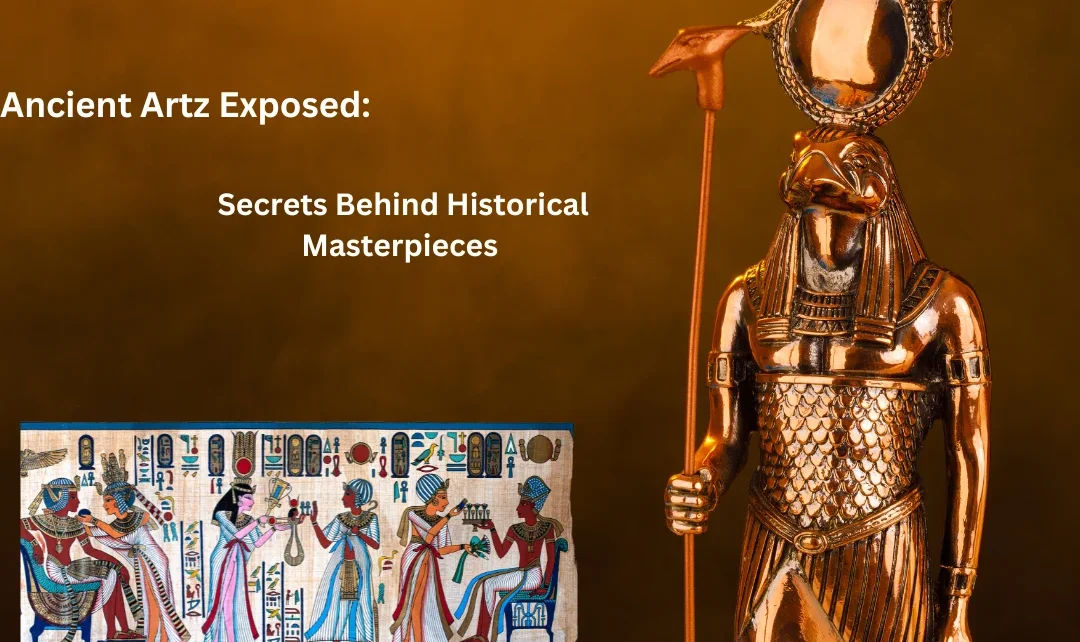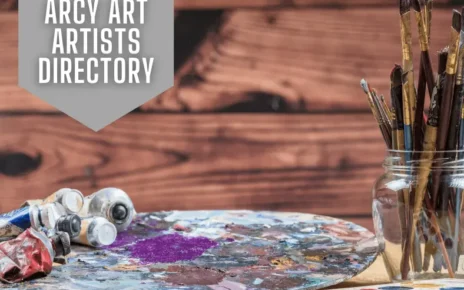Introduction
Ancient Artz therefore remains a perfect symbol of the creativity that is in all of us. From simple drawings on the surfaces of caves as well as intricate sculptures meant for the Greek Olympics. As seen in Simpson’s account, these structures provide a peep into the human heart that was centuries ago. They tell tales of success, difficulties and ambitions, which are as old as ages, to recall the cultural identity. More specifically, this article focuses on the various types of ancient art, their purpose and what they tend to unveil about early societies.
Understanding Ancient Artz
1. The Origins of Ancient Artz
Artz in the ancient world started with the production of tools that’s even more basic. Cave painting is one of the ways that early humans painted their images on the caves walls or stones they found around them. Sculptures and other early forms of art were not mere aesthetics that belonged to the aesthetic domain but they were functional and symbolic in nature.
- Cave Paintings: The paleolithic period The first forms of art that can be said to be ancient are mainly in the form of pictures. That depict animals and scenes of hunting that have been discovered in such caves as that of Lascaux and Chauvet in France.
- Petroglyphs: Art works on rocks or walls depicting scenes in people’s daily existence or religious ideologies.
2. The Materials and Techniques of Ancient Artz
Artists from the past used a variety of designs. And this depended on the area they came from as well as the materials they had access to.
- Pigments: Organic pigments that remained in vogue during early art works included the ones that came from minerals and plants.
- Stone and Wood: Stone and wood used in sculpture and carving made a good display of carving and sculpture techniques for which people had embraced this art.
3. Key Periods in Ancient Artz
If one exercises a brief look at the development of ancient artz. One can divide it at least into a few stages distinguished by different styles and techniques.
- Prehistoric Art: This ranges from about 40, 000 years ago in cavemen’s art forms such as paintings on the cavities and early sculptures.
- Ancient Egyptian Art: Characterized by elaborate imagery and brightly painted, often eminently recognizable form, such as, hieroglyphics and monumental statues.
- Classical Greek Art: Rib mentioned by everybody for its focus on proportion and realism. Which are most prominently illustrated in some famous sculptures, Parthenon for example.
- Roman Art: They are part of an extended Greek art but the difference is that they depict more real life scenes and contain more monumental works.
Cave Paintings: The Dawn of Art
Some of the oldest pieces of art can be considered as images on the cave ‘walls’ are over 30 000 years old. These are masterpieces which can help to throw the light on the life of the people in the early ages.
- Locations: The famous examples of such caves at Lascaux in France and Altamira in Spain.
- Subjects: Are mainly generically animalistic, which may have had some sort of cult or hunting purpose.
Significance:
- Cultural Insights: Illustrate the environment and activities that early human beings used to lead in the prehistoric era.
- Symbolic Meaning: Some could have been used as part of rites while others as part of storytelling.
Sculptures and Carvings: Crafting the Divine
Another form of artz work is sculptures and carvings that were also common in the ancient times. They cover from detailed complex religious icons to monumental government bulwarks.
- Ancient Egypt: Clearly, the consciously created artworks such as pyramids, statues like the Great Sphinx and bust of Nefertiti.
- Classical Greece: Is made by the famous sculptor Phidias such as the Statue of Zeus and the famous marble figure referred to as Venus de Milo.
Techniques:
- Carving: Literally means carving a reverse image on a block of stone with the aim of producing the final image by cutting away the block that surrounds the image.
- Modeling: Modeling the material for instance clay and forming products which are then put for firing.
Comparison of Ancient Sculptures:
| Civilization | Notable Works | Style | Purpose |
| Egyptian | Great Sphinx, Ramses II Statue | Symbolic, rigid | Religious, funerary |
| Greek | Parthenon sculptures, Discobolus | Realistic, idealized | Religious, public monuments |
| Roman | Colosseum, Augustus of Prima Porta | Realistic, grandiose | Public works, portraits |
Ceramics and Pottery: Functional Artz
The everyday objects made of ceramics and pottery for centuries help to understand people’s lives and aesthetic standards.
- Greek Pottery: Famous for the black-figure and the red-figure painting styles.
- Roman Pottery: Included complex patterns and were widely applied in people’s daily lives.
Uses:
- Practical: Storage methods, stove or any other heat source and some form of transportation means.
- Decorative: Gorgeous designs that always had the preference of ancient mythology incorporated.
FAQs About Ancient Artz
Q1: Which of the artz belongs to the oldest works of art of the ancient period?
A: Earliest that have been identified as belonging to the prehistoric art are the rock paintings and engravings discovered in. Lascaux and Chauvet in France and these have been estimated to be about thirty thousand years old.
Q2: How were the ancient pigments made?
A: Different artists of the ancient period have used natural material such as minerals, plant and even animal fat when preparing their colours. These were ground into powders and then rolled in with powder and binders in order to prepare paint.
Q3: How were ancient artz involved in the religious practices?
A: Religions were common in ancient art where most of the artwork products were developed and used mostly as an offering or symbol of ritual or act of worship.
Q4: In what way did the materials that were used for creating artz in the ancient world impact on the artz’s style?
A: The methods of working also depended on the materials like stone, clay or metal which was used in creating the art of the ancient civilizations. For instance, in carving stones there were different procedures that needed to be followed with that of modeling clay.
Q5: Is it still possible to see the art from the prehistoric times, and describe a few of them?
A: The world is still able to see many pictures and sculptures that originated from ancient civilization such as the Pyramid of Giza. The Parthenon as well as the various paintings done on the caves of Europe and Asia.
Conclusion
At Ancient Artz, our clients get an opportunity to discover the past creativity and innovative ability of different civilizations. The prehistoric paintings on the walls of caves depict the simplest form of art while paintings and sculptures that were developed by ancient. Greece and Rome provide a lot of information about the advancement of arts in these civilizations. Studying artz is not merely admiring the earliest and the most primitive artworks that people managed to produce but also trying to comprehend ‘who’ was behind that. Therefore, even as we go on with the analysis of these masterpieces. We keep alive an important tradition which allows us to experience. The richness of history and the genius reflected in our humanity.



